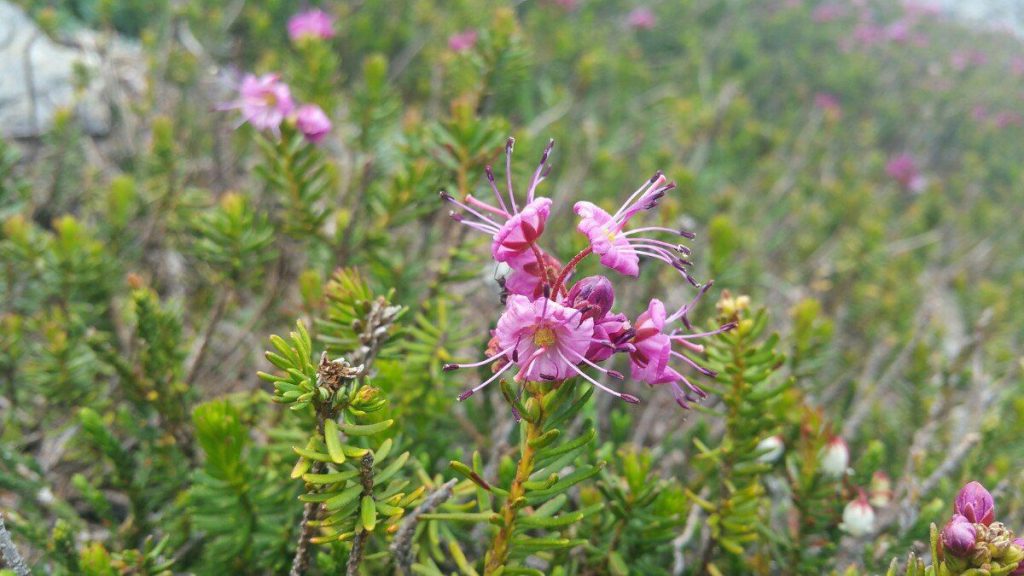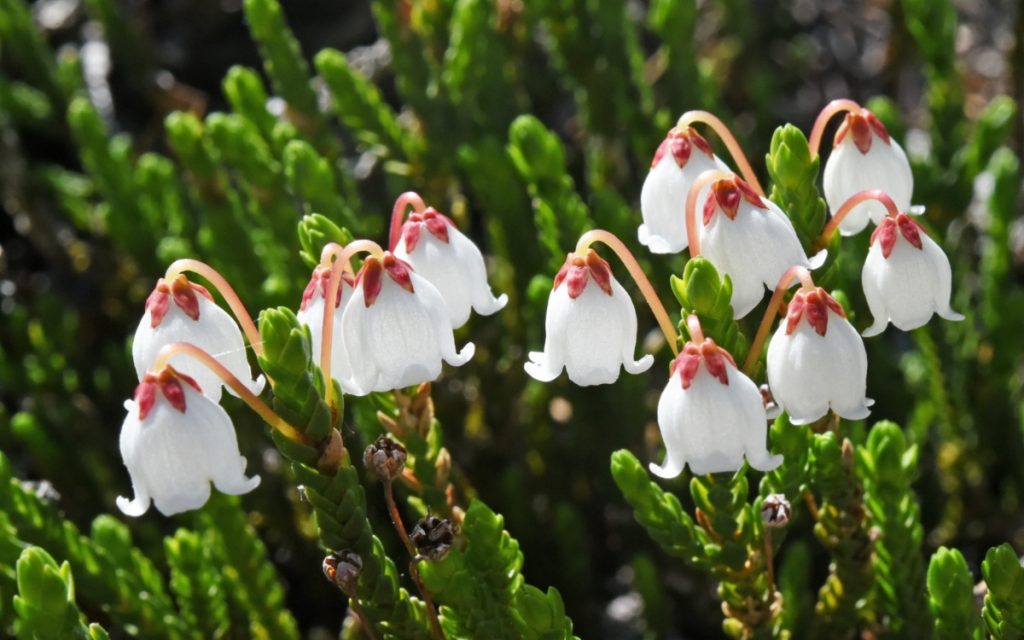
The Ericaceae, the heath or heather family, includes a wide variety of plants, many of which are adapted to acidic and nutrient-poor soils. Here are some defining characteristics:
- Leaves: often evergreen, simple, and alternate. They may be needle-like or broad and can be arranged in a spiral or whorled pattern.
- Habitat: Many found in acid soils, particularly in heathlands, moors, and pine barrens. They are often associated with nutrient-poor environments.
- Flowers: Typically bisexual and often symmetrical. They have a bell-shaped or tubular structure and are often arranged in clusters. The floral parts are usually in multiples of four or five.
- Calyx: Usually present and may be fused into a tube. It often persists in the fruiting stage.
- Corolla: May be fused into a tube and is often urn-shaped or bell-shaped.
- Fruit: Often a capsule or berry.
- Mycorrhizal Associations: Many form symbiotic relationships with mycorrhizal fungi, which help them absorb nutrients, especially in nutrient-poor soils.
- Economic Importance: Well-known members of the Ericaceae include blueberries (Vaccinium), cranberries (Vaccinium macrocarpon), and rhododendrons (Rhododendron).
Here’s a video from the Jepson herbarium about Arcostaphylos patula.
Follow this link to the Jepson key to CA Ericaceae.

